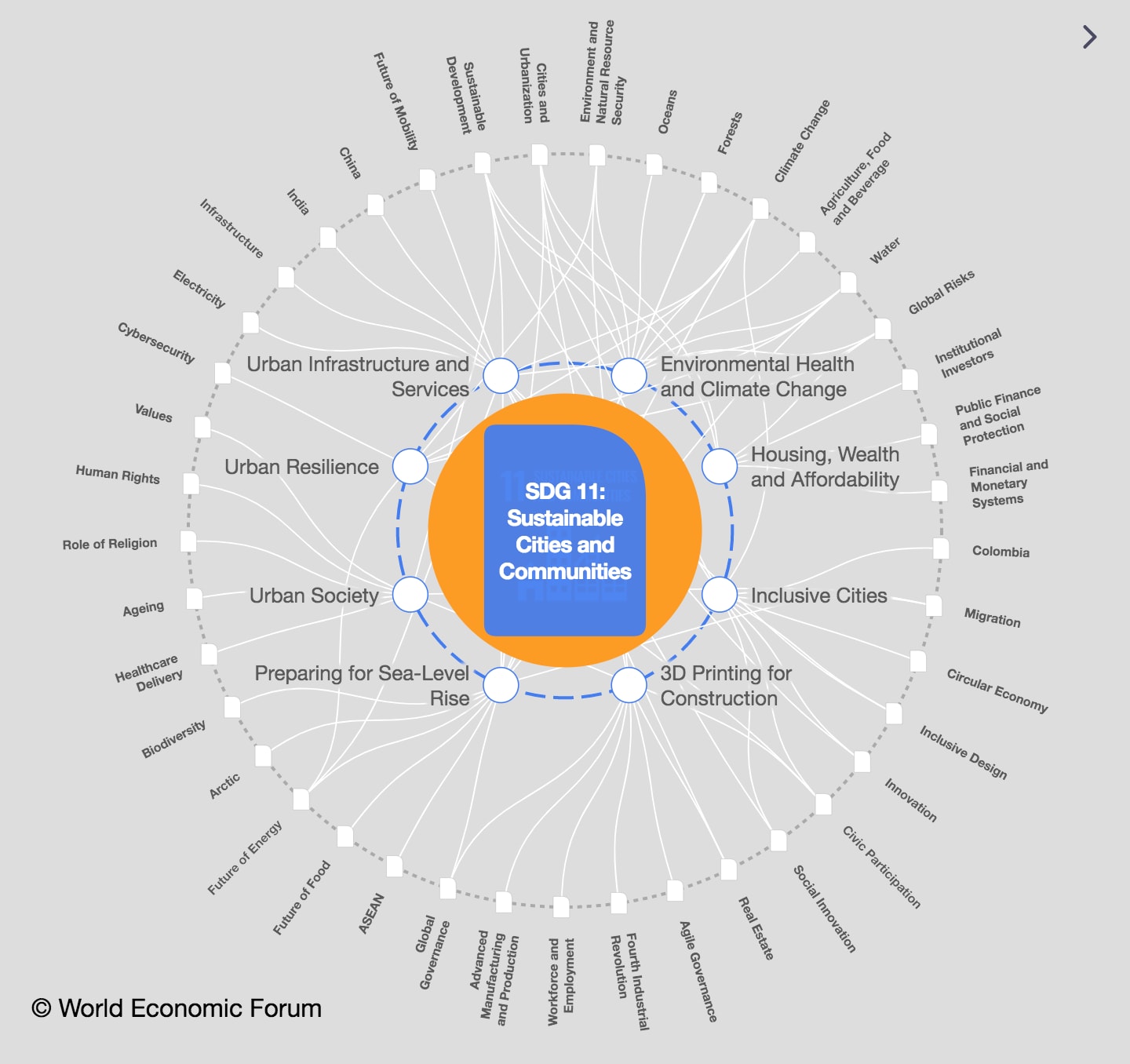Around the world, these are just some of the cities at risk of rising sea levels

Cities around the world are vulnerable to severe weather conditions. Image: REUTERS/Chalinee Thirasupa
Listen to the article
- Rising sea levels driven by climate change pose a major threat to large coastal cities.
- Existing flood defenses will not be enough to save them from the sea, according to a recent IPCC report.
- Experts are calling for urgent action, but some believe it's already too late.
Global sea levels are rising and some of the world’s greatest cities could be underwater by the end of the century, if action to protect them is not taken quickly.
The Intergovernmental Panel on Climate Change (IPCC) forecasts that by the end of this century, sea levels could be as much as 1.1 metres higher than they are today and severe flooding events will become a regular occurrence in low-lying cities.
The World Economic Forum’s Global Risks Report 2020 warned that because of the faster than predicted melting of polar ice caps, the number of people vulnerable to rising sea levels - 190 million - was three times higher than the previous estimate.
What’s the World Economic Forum doing about climate change?
“Rising sea levels will increasingly create refugees as people flee low-lying areas. Indeed, defence and intelligence agencies are now regularly warning that climate change could trigger conflicts severe enough to uproot entire populations,” the report adds.
In the 2019 edition of the report the the authors identified three strategies for adapting to rising sea-levels: engineering projects to keep water out; nature-based defenses like conserving mangrove forests and saltmarshes; and moving households and businesses to safer ground.
The 2050 Climate Change Index ranked the Thai capital of Bangkok as the world’s most vulnerable city to sea level rises. A fifth of the city was reported underwater in 2011 when the region suffered its worst Monsoon flooding. More than 500 people were reported to have died.

Bangkok - like other cities at high risk of flooding - is sinking. Combined with a predicted increase in the frequency of extreme weather events and storm surges, this could see a third of the city under water by 2050, according to World Bank figures.
Sinking cities
Half a world away, New Orleans is also sinking. The devastating effects of extreme weather on a low-lying coastal city were cruelly demonstrated by Hurricane Katrina, which unleashed deadly floods in 2005. Roughly half of the city is already below sea level.
Back in 1895 only 5% of the city was below sea level. Over time, improved land drainage caused the soil to dry out, eventually resulting in major subsidence. Scientists say this and other factors are causing areas of the city to sink by up to 40 milimetres a year.
Another sinking coastal city is Venice, which is built on 120 low-lying islands with buildings underpinned by wooden piles sunk into the sediment. As sea levels rise, the city is sinking at a rate of 1 milimetre a year.
Iraq's port city of Basra was once known as the Venice of the East thanks to its freshwater canals. Unfortunately, they also make the low-lying city vulnerable to flooding, especially as they have become clogged with refuse as a result of recent conflicts.
Extreme weather
Monsoon flooding is already a regular occurrence in Kolkata, the capital of India’s West Bengal province, which is home to nearly 15 million people. As sea levels rise and climate change intensifies annual rainfall, it’s future is in peril given that parts of the city are currently only 1.5 metres above sea level.
It’s a sign of the escalating threat from climate change that Savannah in the US is forecast to experience what were once-in-a-century floods every year by 2050. Situated between two rivers, the city is already vulnerable to three-metre-high “king tides” along its shoreline.
So what can we do to protect cities?
Alongside reducing emissions and preventing the rising temperatures that are causing sea level rise, many cities around the world are already taking steps to protect people and property.
As Robert Muggah explained for the World Economic Forum in 2019, these can fall into three categories. Firstly, hard engineering projects, like sea walls or surge barriers, second environmental approaches - think mangrove restoration - and thirdly more people-focused approaches, like urban design or plans to retreat.
For example, in New Orleans, among other initiatives, they’ve been working to control the "placement, construction and design of new developments" and a water management strategy to reduce flood hazards. Tanzania's Dar es Salaam followed a similar approach and worked to restrict construction in high-risk areas.
And in New York and Bangladesh, oyster reefs - built using oyster shells - are being introduced to try and protect communities from flooding.
Don't miss any update on this topic
Create a free account and access your personalized content collection with our latest publications and analyses.
License and Republishing
World Economic Forum articles may be republished in accordance with the Creative Commons Attribution-NonCommercial-NoDerivatives 4.0 International Public License, and in accordance with our Terms of Use.
The views expressed in this article are those of the author alone and not the World Economic Forum.
Stay up to date:
SDG 11: Sustainable Cities and Communities
Related topics:
Forum Stories newsletter
Bringing you weekly curated insights and analysis on the global issues that matter.
More on Nature and BiodiversitySee all
Federico Cartín Arteaga and Heather Thompson
December 20, 2024






